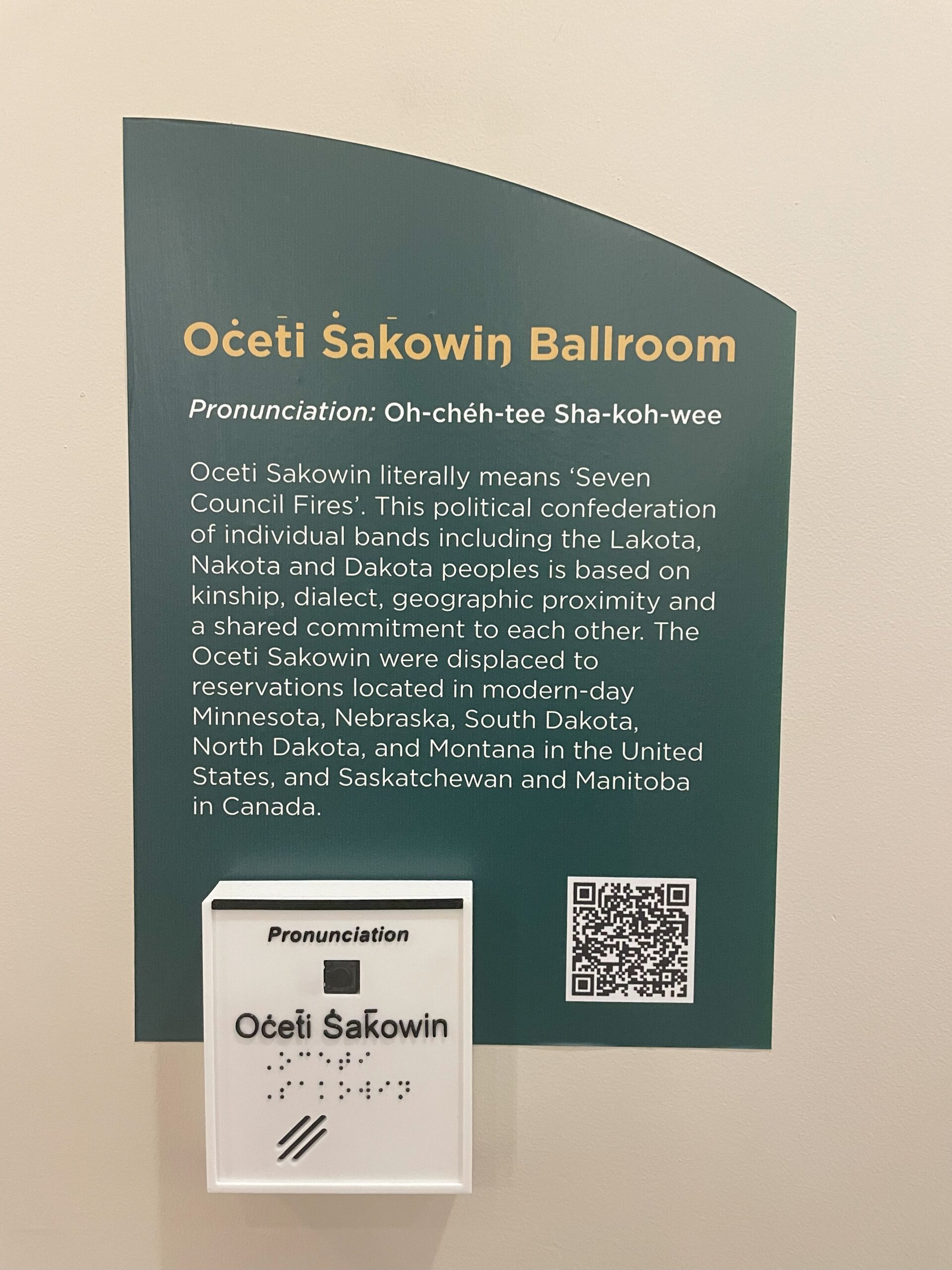In recent years the conference rooms in Memorial Union were named to reflect the legacy of the land that NDSU is built on and the seven nations that interacted with the land before the university was built. Though this was an important step in acknowledging NDSU’s role in taking land away from these nations as a land-grant university that has benefited from land it didn’t own, there is still a long way to go in terms of reparations, according to Anthony Faris, the galley coordinator and curator of collections at Memorial Union Gallery.
Faris was one of the collaborators on a recent project in Memorial Union which placed plaques near each room in Memorial Union that provide background information on the naming of the room, as well as a pronunciation guide written out in English and in braille, and an audio box that plays the pronunciation of the room’s name when pressed.
The pronunciation of the rooms’ names was previously posted on the Memorial Union website, but the new sign installation makes learning how a name is pronounced as simple as the press of a button and makes it as easy as possible for people to be respectful of the other cultures and languages represented by the names chosen for the conference rooms.
It is important to make sure that the names of the rooms are pronounced correctly because it shows respect for another language and culture. “It’s an acknowledgment that within that language, there are different stories, and you want to show respect to that history—being able to communicate it correctly honors that history,” said Faris.
The audio pronunciations of the rooms’ names were recorded by Tyrel Iron Eyes, the tribal archaeologist for the Standing Rock Sioux, and the project was pioneered by Danny Luecke, a member of the Choctaw nation and a Ph.D. student at NDSU. Faris and Hollie Mackey, an associate professor at NDSU, collaborated with them on behalf of the university. Both Faris and Mackey are passionate about social justice and intervention activities and have worked on many projects similar to this in the past.
Another project Faris is working on is creating an affordable sign to display in each department at NDSU with the Land Acknowledgment. The sign is laser-etched on campus, and a base for it is 3D printed at the library, which is also where the casing for the pronunciation box is printed. Faris believes that the Land Acknowledgement still plays a role in the discussion around land and resource use at NDSU. “It shouldn’t just be prescriptive,” he said. “I think that there should be an allowance for nuance…we’re responsible for what happened to those nations and these people are still part of our community today.”
